

Max Davies
How Audi, BMW, Honda, Mercedes-Benz, and Suzuki started out in Australia, and where they are now
2 Hours Ago
We're all about keeping cyclists safe, but minimum passing distances are impossible to follow and tough to enforce.

Publisher
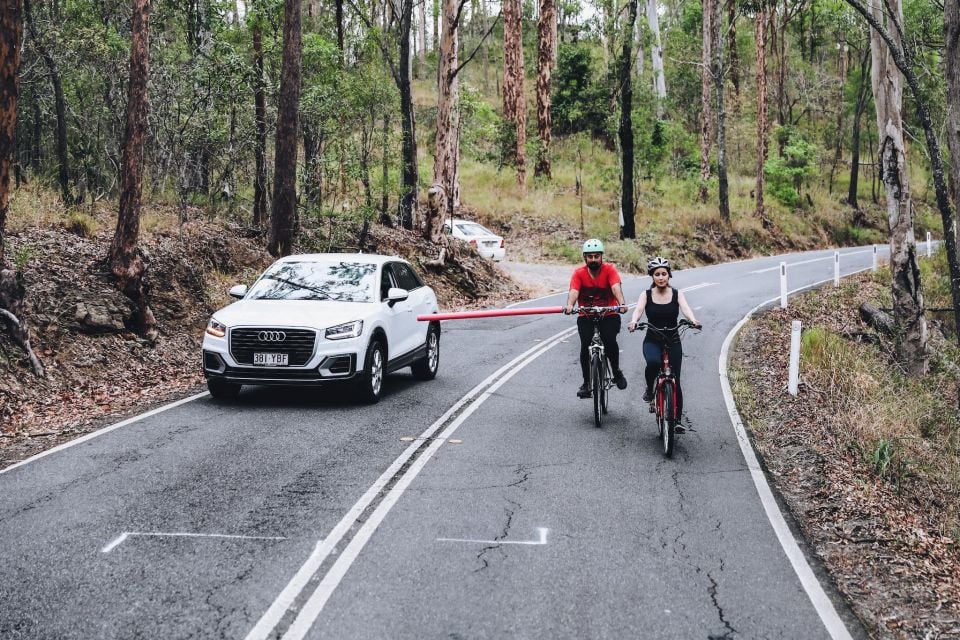

Publisher
Australia’s most dangerous road rule is the enforced minimum distance a motorist has to give when passing bicycles.
There are plenty of rules in Australia we’d like to see revised, but one road rule, in particular, is simply nonsensical. That’s the minimum distance requirement for when you pass a bicycle.
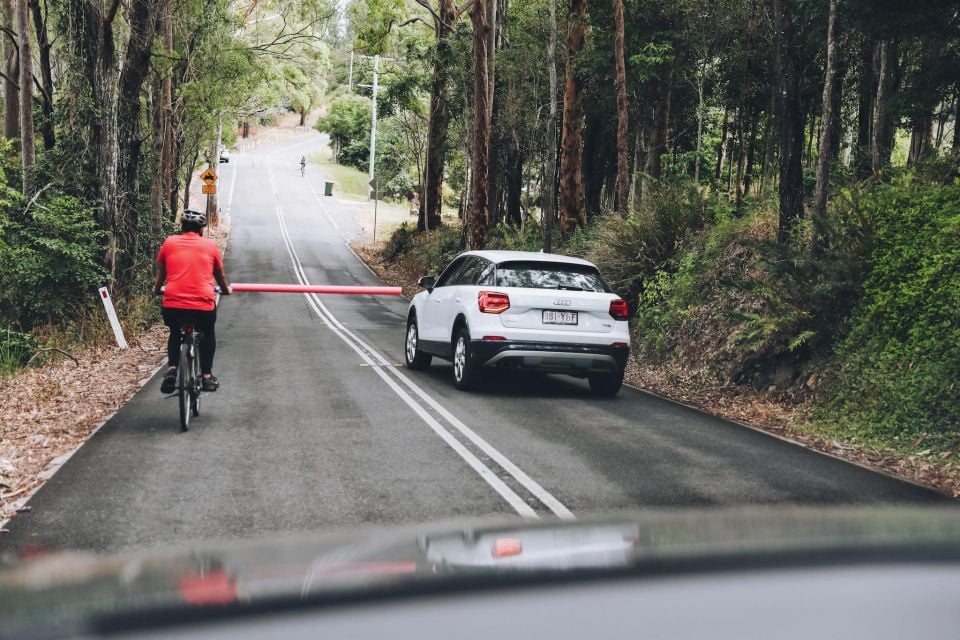
In every state and territory in Australia except Victoria – where you have to give sufficient space but no official distance is enforced – motorists are required to give cyclists a metre when passing in speed zones below 60km/h, and 1.5m above 60km/h.
This rule is measured from the rightmost part of the bicycle (like the handlebar) or the rider, to the leftmost part of the vehicle or an object sticking out from the vehicle (such as a side mirror).
Basically, if you line up a car parallel to a bike, there has to be 1.0 or 1.5m between them depending on the speed zone.
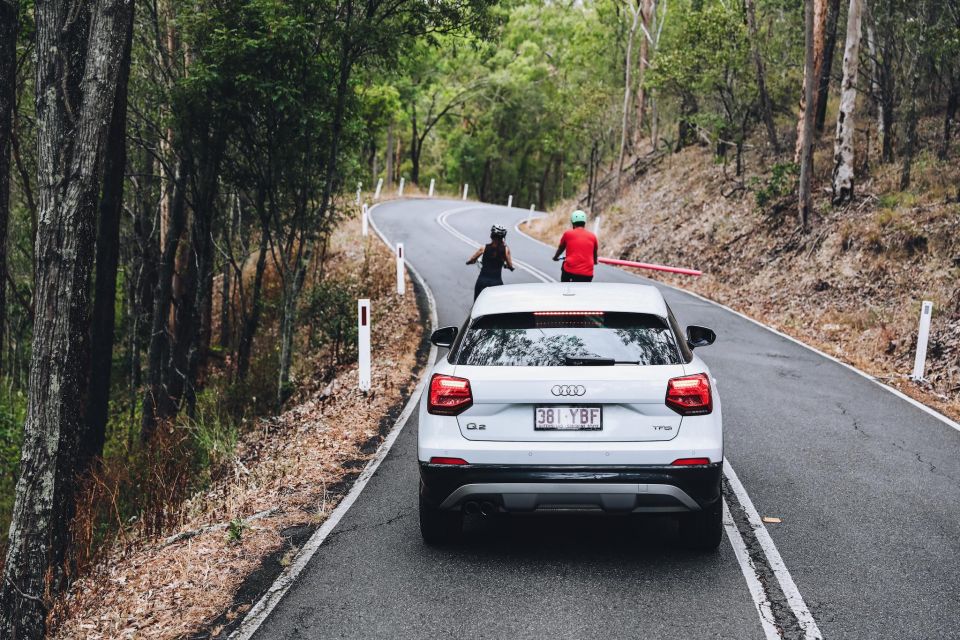
This rule applies even if the bicycle is riding past an obstacle, and even applies when cyclists ride two abreast –which they are legally allowed to do so long as there isn’t more than 1.5m between them.
The fine for not giving the required distance for motorists when passing a cyclist is:
In order to meet these distance requirements, motorists first need to indicate their intent and when they deem it safe, are allowed to:
Before we continue, it’s important to know a fair few of us at CarExpert, including myself, are cyclists – albeit on bike paths in my case. Respecting cyclists and their safety is paramount to better roads for all.
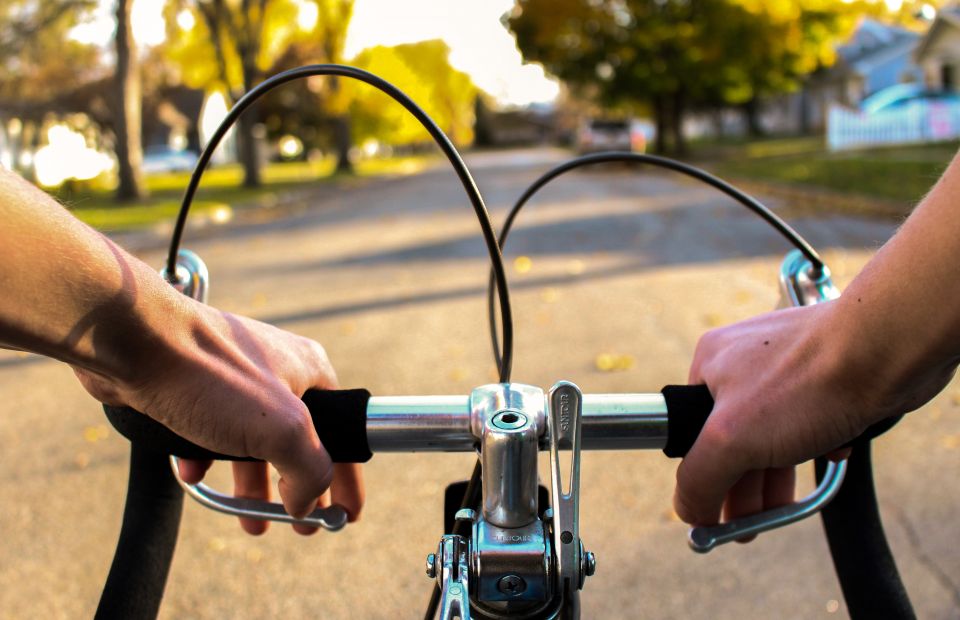
The issue we’re raising here is not about being anti-cyclist or diminishing the push for improving road safety for all.
The issue is the blanket minimum distant rule for motorists to cyclists doesn’t take into account any mitigating factors.
You might be thinking 1m or 1.5m really isn’t much space to give and, on a wide and open road with plenty of space to spare, you’d be right.
As we will show below though, that’s not always the case. In most major cities, cyclists tend to love twisty mountainous roads that also happen to be narrow and relatively busy.
These roads typically have posted limits of 70km/h or above, which means the full 1.5m distance is required to pass. We believe in order for a road rule (or any rule) to be effective it needs to make sense, and be reasonable in all circumstances in which it is enforced.

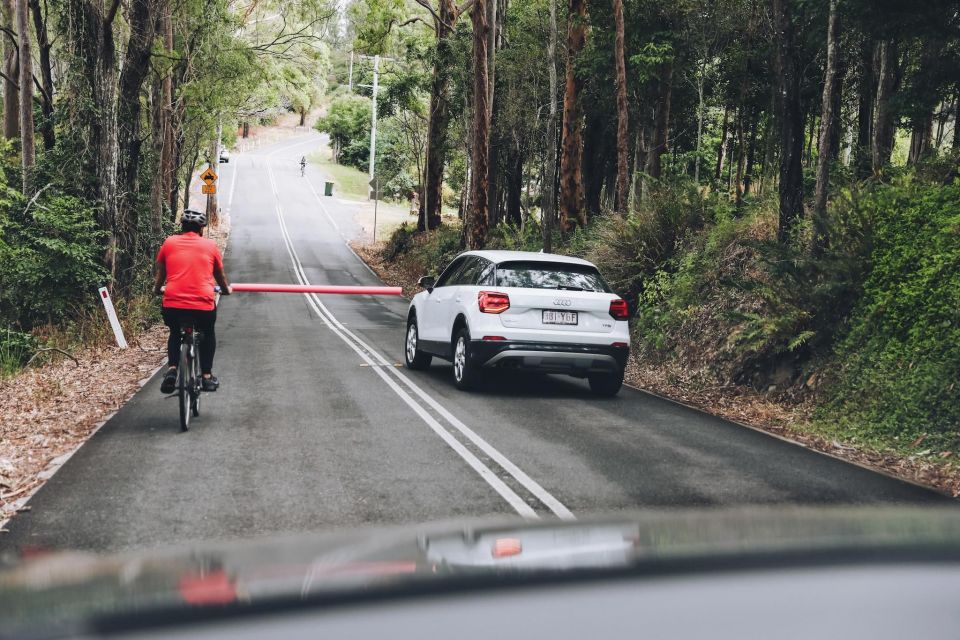
To find out how realistic the distance to cyclist rules are, we headed to Mount Glorious and Mount Nebo in Brisbane.
A 20-minute drive from the Brisbane CBD, this twisty patch of motoring heaven is loved by car enthusiasts and cyclists for its amazing road surface and endless twists and turns, that navigate to some truly amazing lookouts and wonderful cafes.
It’s also narrow, with next to no room on either side of the two-lane road. And it just happens to be a 70km/h zone, meaning a 1.5m distance is legally required when passing cyclists. It’s previously been an 80km/h zone, so it is by no means a suburban road.
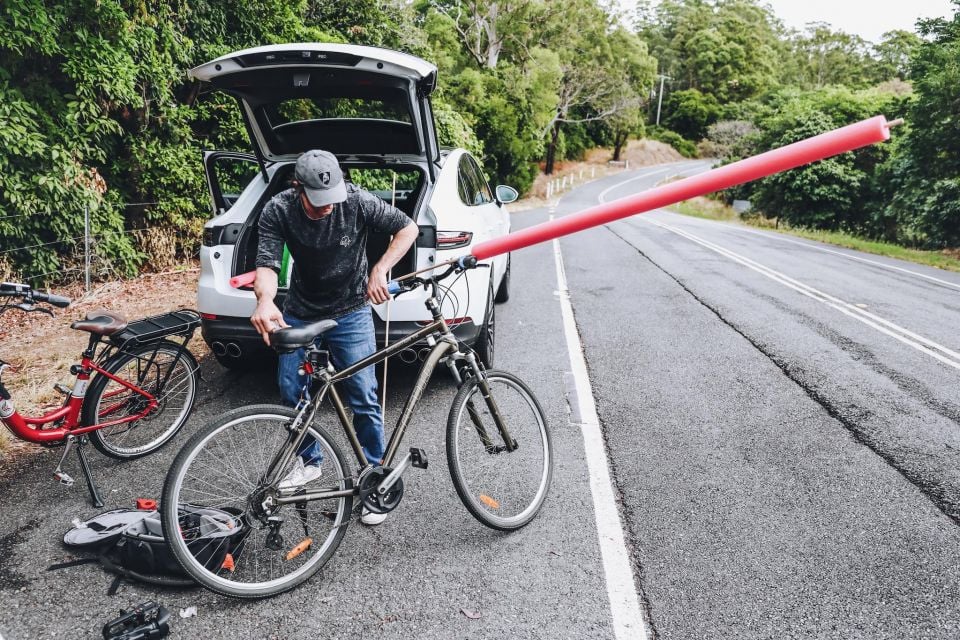
To demonstrate where the distance rule is nonsensical – and actually dangerous to motorists and cyclists alike – we came up with a simple idea.
We went to our local pool shop and bought a pool noodle, which we cut to 1.5m. We inserted a long, thin stick (so it would snap for safety reasons if hit) to keep its shape, and attached it to the rightmost side of my bike’s handlebars.
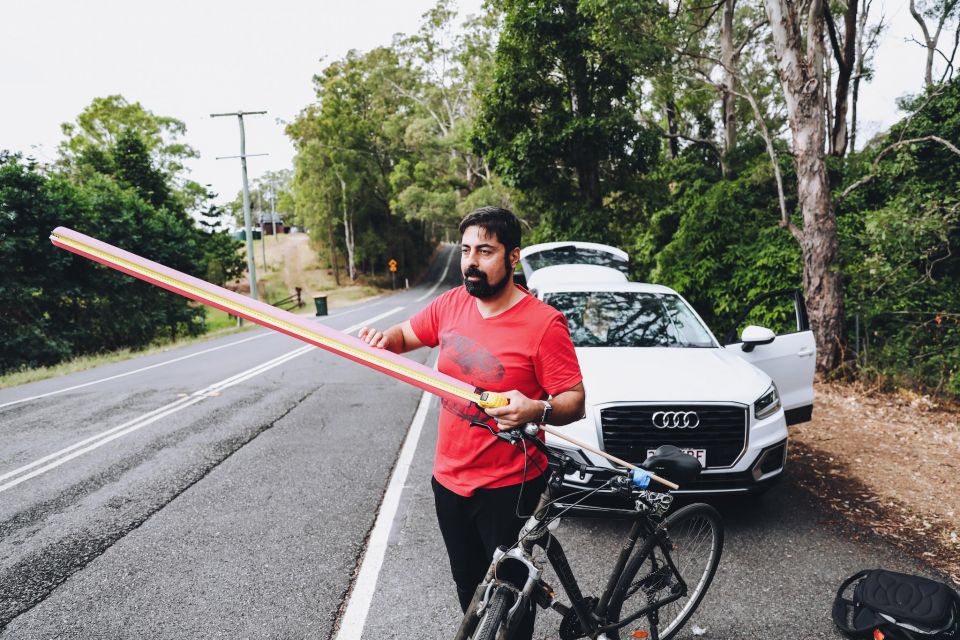
This noodle hasn’t been extended for dramatic effect. It’s actually just under 1.5m long, measuring up at 1.48m to give us some margin for error.
To start with, 1.5m is much longer than it looks. The crew involved in this experiment had to check the length for themselves, because it looked so ridiculous attached to the bike that we stared to wonder if anyone measured the distance before these rules were put in place.
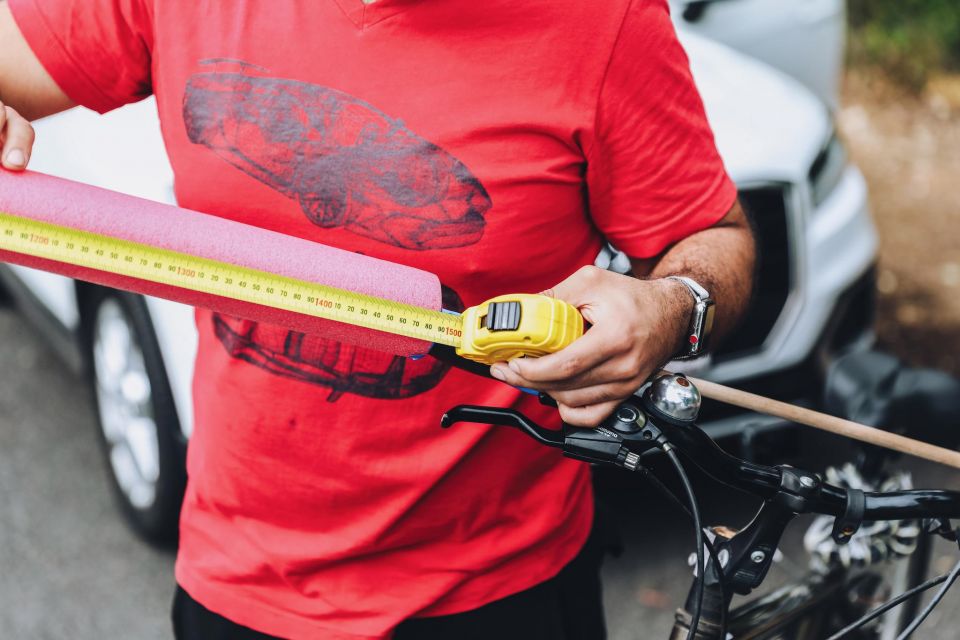
From here, yours truly began riding down Mount Nebo with a photographer chasing, snapping photos of what it looked like for a car to safely pass without hitting the noodle.
Even riding no further than 30cm from the left edge of the road, we found it was impossible for a vehicle to pass with the 1.5m distance rule without well and truly going to the other side of the road toward oncoming traffic.
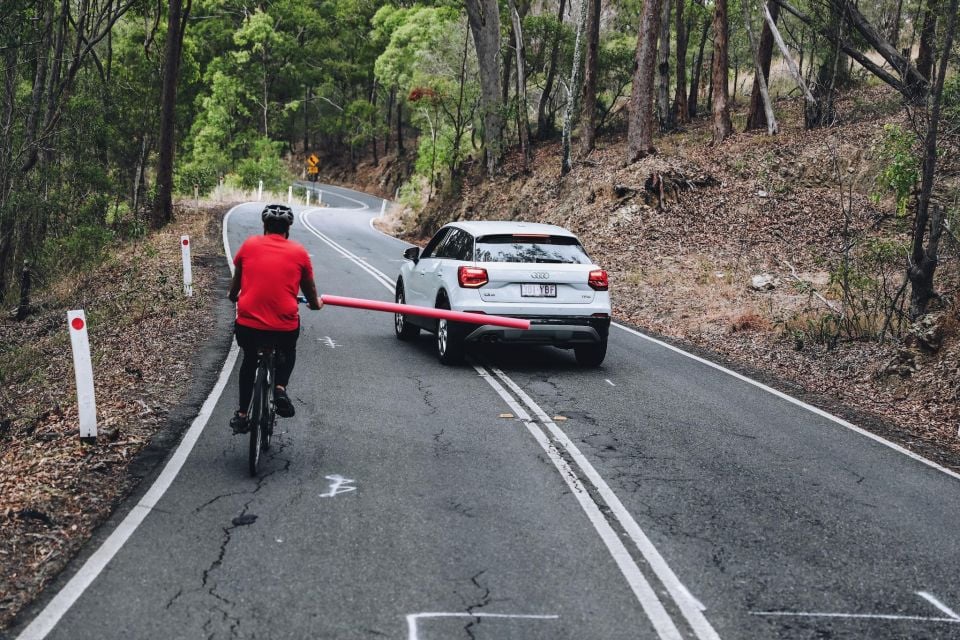
That wasn’t the end of it. My unsuspecting wife and her bicycle then rolled in to demonstrate the case even more.
Riding two abreast down the mountain is legal, so we kept the distance between us on the bikes well and truly below the 1.5m side-by-side distance allowed for two cyclists.
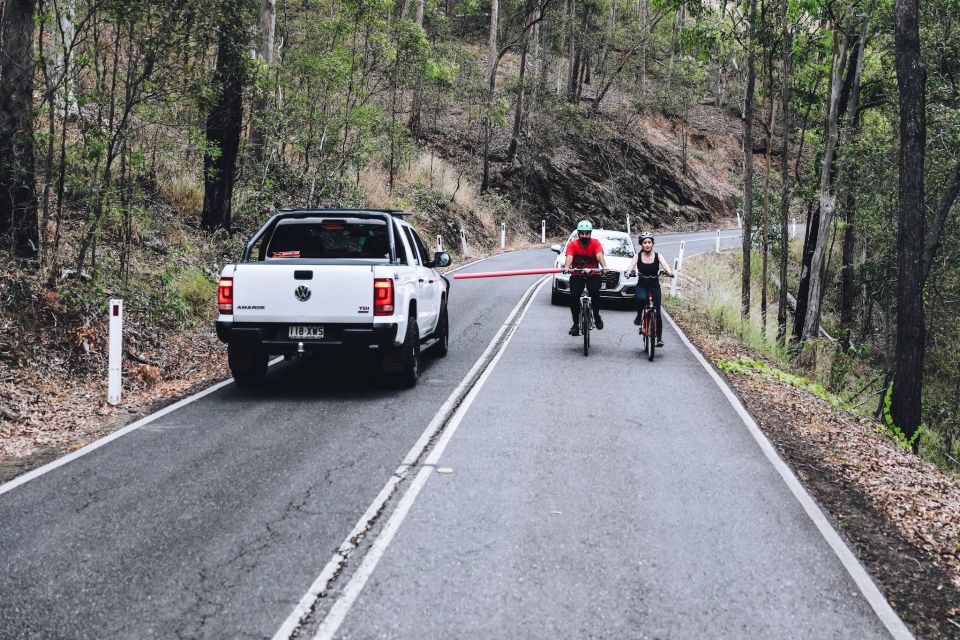
In this instance, the part of my bike with the pool noodle attached was so far onto the other side of the road even cars coming the other way struggled to drive past, and vehicles trying to pass in the same direction had to not only put both wheels on the other side of the road, but in some cases actually go off-road on the other side to complete the overtake.
The average Australian lane width is around 3m. The roads we used here were certainly narrower than that. But even taking the 3m width as the average, let’s do some simple math.
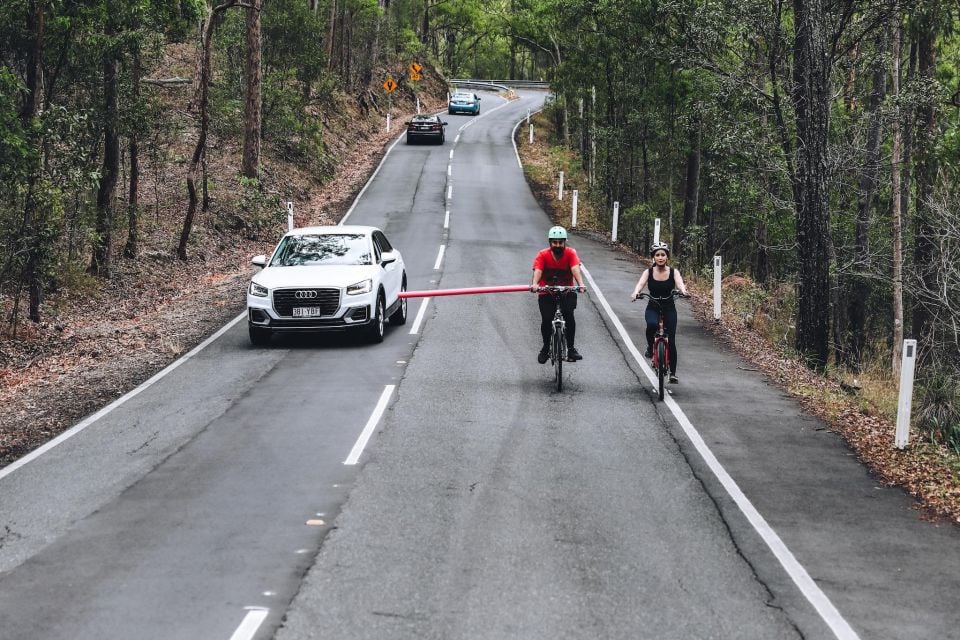
Australia’s two most popular cars, the Ford Ranger and Toyota HiLux as well as most medium-sized SUVs, measure somewhere between 1.85 to 1.95m wide. An adult bike is at least 30cm wide, in most cases almost double that (but lets err on the side of caution).
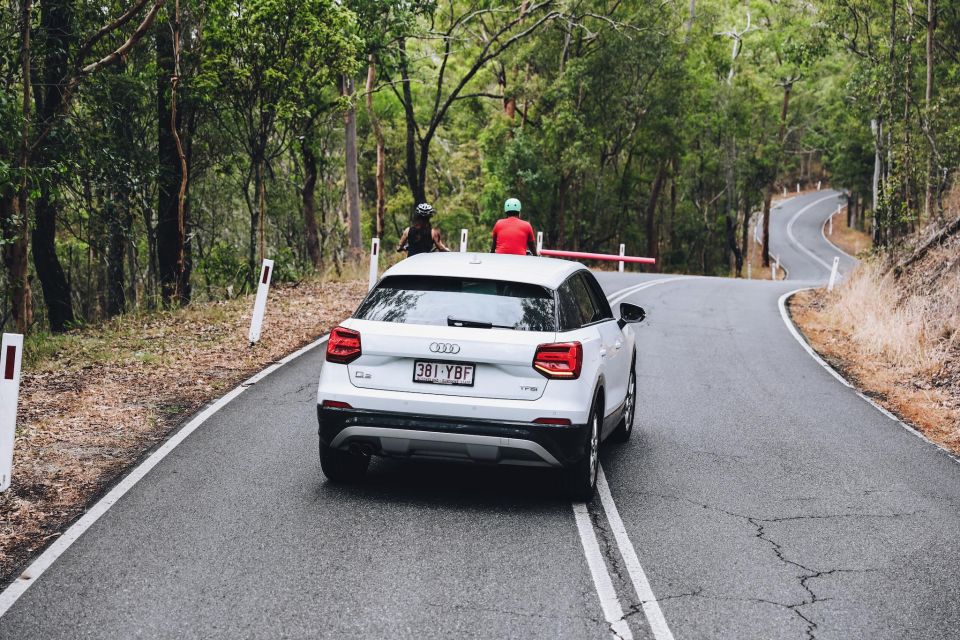
If we add 1.5m for the distance required to pass a cyclist on roads where the speed is above 60km/h plus the width of the bicycle itself at 0.3m and the width of the car at 1.9 metres, we are already at 3.7m.
This’s not taking into account the fact cyclists don’t ride on the absolute edge of the road. If they’re riding at least 30cm from the left lane’s edge, that takes us to 4m.
This means in order to pass a single cyclist in Australia’s most popular vehicles, you’re required to be a whole metre on the other side of the road, on a generously sized road, let alone the twisty, narrow roads used for testing here.
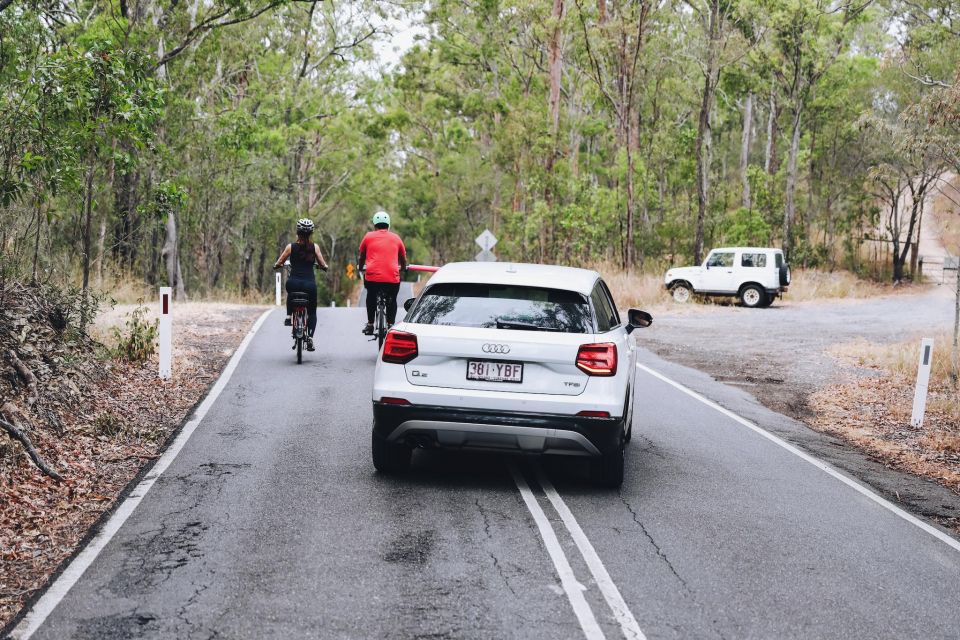
Add another cyclist to the mix, which can ride up to 1.5m away from the first cyclist, plus the width of the bike itself and we have yet another 1.8m of the road taken up.
In the two-cyclist situations, the distance from the edge of the road can be up to 4.3m to legally overtake.
Remember the best-selling cars in Australia are 1.9m wide and most roads are no wider than 3m and you’ll quickly realise the car will need to have its right wheels 20cm off the other side of the road to meet the safe distance rule of 1.5m.
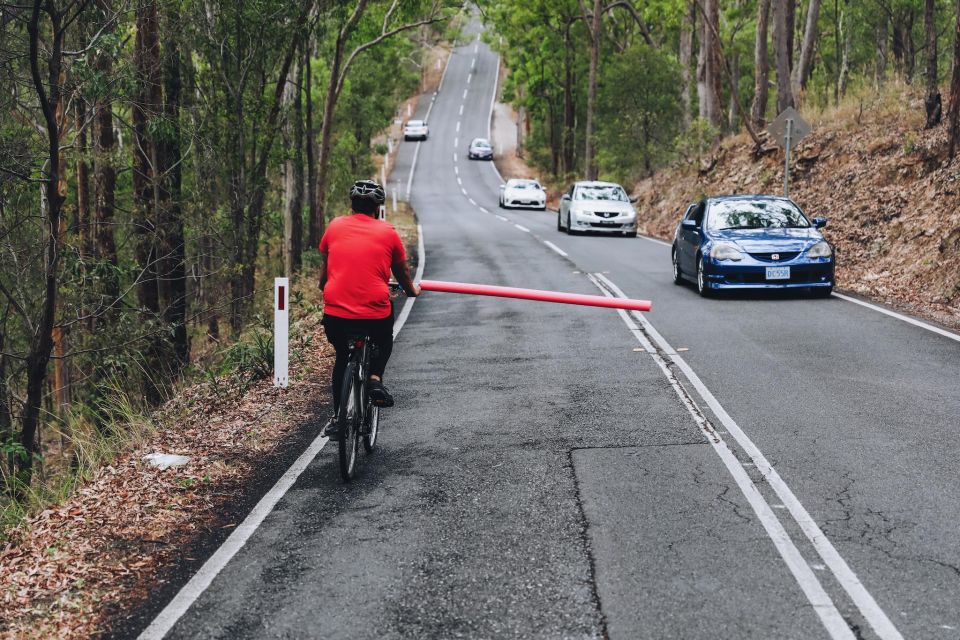
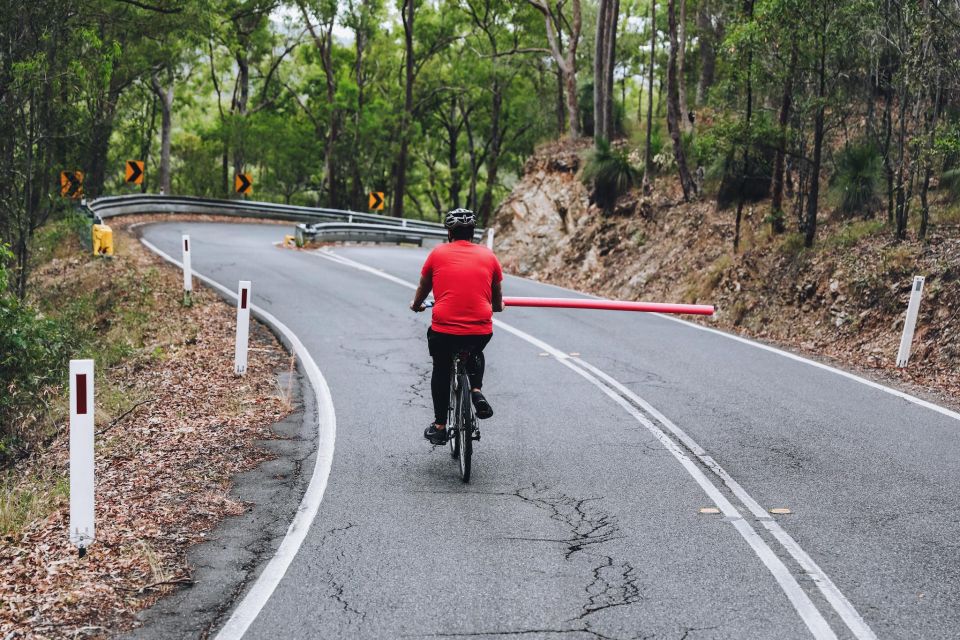
This is dangerous and in some cases impossible, because plenty of roads have barriers on the edge.
What’s the purpose of a road rule you can’t follow?
Victoria remains the only state or territory in Australia where the distance rule to cyclists is not mandated, but motorists are required to provide sufficient distance. This seems to make a lot more sense because blanket rules aren’t enforceable or safe on some roads.
In addition, the easiest way to solve this problem would be to ban two cyclists riding abreast, or at least on roads narrower than a certain width.
Interestingly, the Centre for Automotive Safety Research at the University of Adelaide conducted a very similar study to our little experiment that it published back in May 2019.
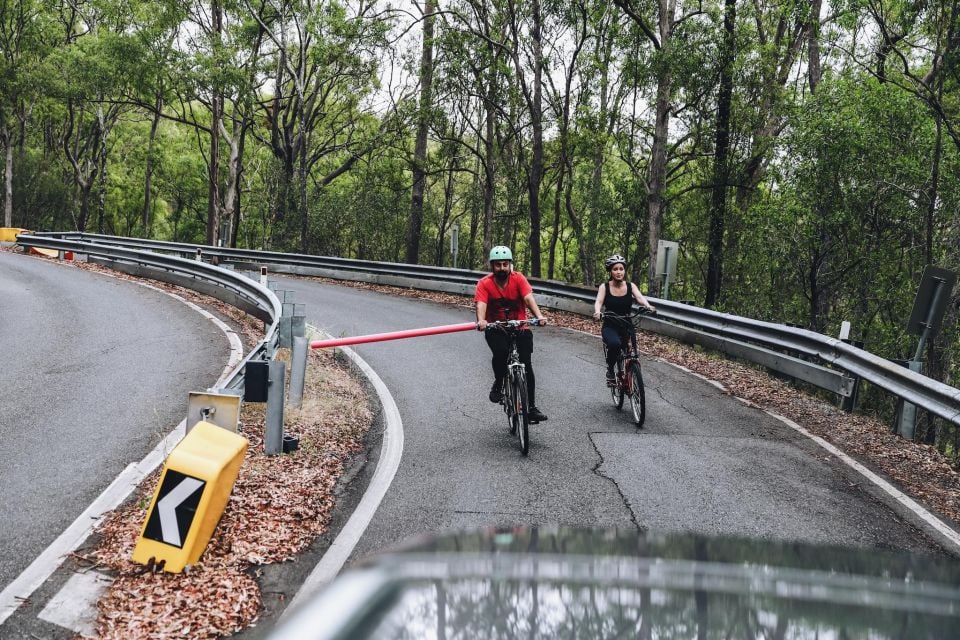
As opposed to our highly-sophisticated pool noodle, the university attached passing distance measurement devices (using two ultra-sonic sensors) to 23 regular riders and measured how often motorists passing them broke the distance rule in a four-week period.
During the experiment 16,476 motorists passed the 23 cyclists, with the passing distance recorded each time.
To further prove our point, on occasions when the speed limit was 60 km/h or below and the minimum passing distance was one metre, only 2.7 per cent passed closer than a metre – 97.3 per cent overtook legally.
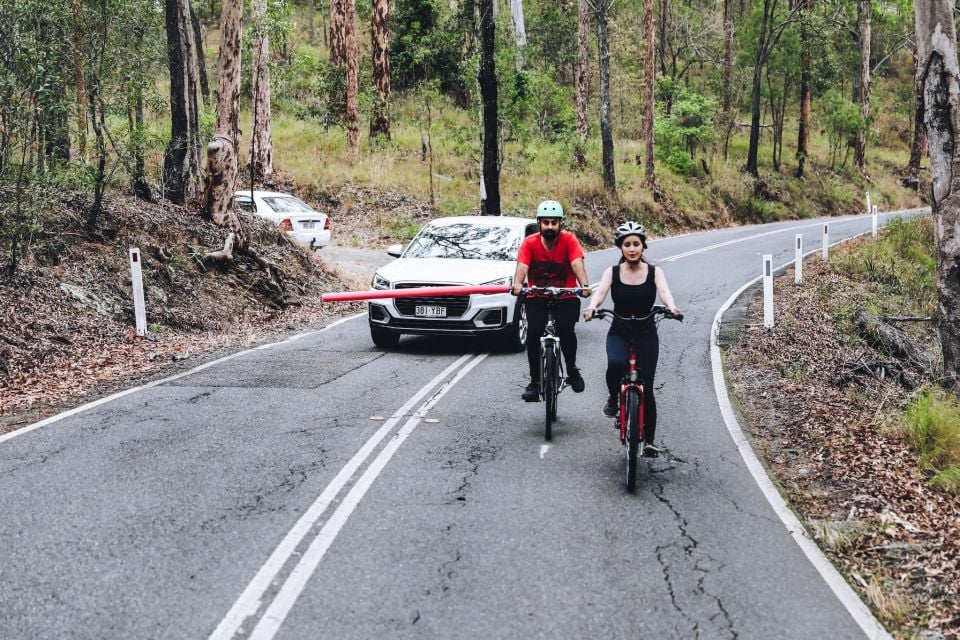
When the speed limit was above 60km/h and the full 1.5m distance was required, the number of people who didn’t pass at the legal distance rose to a massive 11.2 per cent. During this experiment, no contact was made with any of the cyclists by any vehicle.
None of the testing was conducted with two cyclists riding abreast.
What does this show? If more than one in 10 drivers passing a cyclist are unable to maintain 1.5m in speed zones above 60km/h, the minimum passing distance rule is flawed and unenforceable.

On another note, the study also found “the presence of a bicycle lane on a road appeared to be associated with a lower proportion of non-compliance on both high-speed and low-speed roads. Interestingly, on low-speed roads, the median passing distance was found to be lower in locations where there was a bicycle lane”.
What we’re pushing for here is consideration for the revision of the distance rule, or reconsidering the legality of allowing two cyclists to ride abreast on such narrow roads.
Handing out an expensive ticket and demerit points to motorists who don’t meet the 1.5m rule when compliance is dangerous or negligent, especially in cases of two cyclists riding abreast, doesn’t make sense.
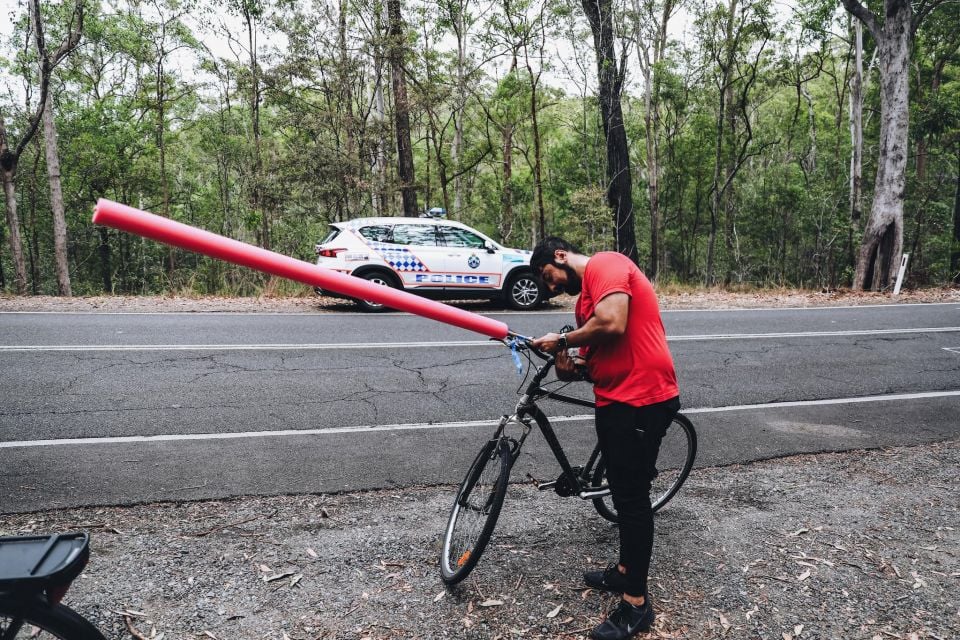
On a side note, during the production of this story numerous cyclists reported us to the police for attaching a ridiculously long object to the side of our bike.
How do you feel about minimum passing distances?
MORE: How Alborz became a cyclist because of Coronavirus MORE: There’s no need to be ashamed of your cycling habit
Alborz Fallah is a CarExpert co-founder and industry leader shaping digital automotive media with a unique mix of tech and car expertise.


Max Davies
2 Hours Ago


William Stopford
2 Hours Ago


Derek Fung
2 Hours Ago


Max Davies
10 Hours Ago


William Stopford
1 Day Ago


Ben Zachariah
1 Day Ago